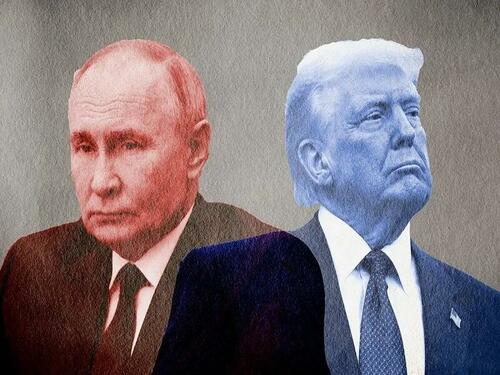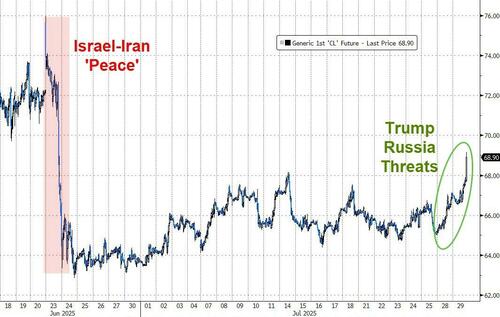Authored by Andrew Korybko via Substack,
Polar opposite understandings of the Sino-Indo prisoner’s dilemma lie at the core of their calculations…

Trump announced on Monday that he was shortening his 50-day deadline to Putin for a ceasefire in Ukraine to “about 10 or 12 days from today”, thus meaning that he plans to impose up to 100% tariffs on all its trading partners by 7-9 August, but likely with exceptions such as the EU that he just subjugated.
Turkiye might also be excluded given its attempt to expand its influence eastward at Russia’s expense, as could minor US trade partners like the Central Asian Republics as long as they curtail trade with Russia.
The question on everyone’s mind is whether he’ll tariff China and India, if they don’t cut off or at least curtail their resource-centric imports from Russia, that is. They’re Russia’s top trading partners, which collectively form the RIC core of BRICS, yet they trade more with the US (with whom they’re in ongoing trade negotiations) than with Russia. China and India are also some of the world’s largest economies so the US’ imposition of 100% tariffs could destabilize the global economy and raise prices for Americans.
[ZH: Oil prices are spiking on the reiterated headlines today from Trump sanctions on Russian oil…]

Trump just clinched a lopsided trade deal with the EU that turned it into the US’ largest-ever vassal state, which might embolden him to tariff China and/or India despite their ongoing trade talks if they defy him should he believe that this new arrangement can help reduce the blowback to the US. He’s therefore calculating that China and/or India will at least curtail energy imports from Russia, whether voluntarily or under tariff duress, thus hitting its coffers and making Putin more pliable to concessions with time.
For his part, Putin is calculating that Russia can still achieve its goals in full – controlling the entirety of the disputed regions, demilitarizing Ukraine, denazifying it, and then restoring its constitutional neutrality – even if China and/or India curtail trade with it, though he’s not sure they will. Each is under tremendous pressure from the US in their own way so he might expect them to defy it. If both do so, then they might patch up their problems, thus turning RIC into a force to be reckoned with by the US.
Trump’s and Putin’s calculations have the prisoner’s dilemma in common. Trump’s tariff threats and the other arms-related pillars of his new three-pronged policy towards Ukraine are correspondingly intended to coerce economic-political concessions from China and India and geopolitical-security ones from Russia. He expects at least one of BRICS’ Asian anchors to even only partially comply, thus enabling him to exacerbate the Sino-Indo rivalry for the US’ hegemonic benefit and then put more pressure on Russia.
None of them wants to be the last to reach a deal with the US, Trump believes, and accordingly have much less negotiating flexibility than ever. Putin conversely believes that China and India are more concerned about the consequences of the other becoming Russia’s top partner if their country complies with the US but their rival doesn’t (as explained here) than with the consequences of Trump’s threatened tariffs. He’s also confident that the US can’t stop Russia from achieving its goals in any case.
Trump’s shortened deadline for Putin will therefore soon reveal which of them miscalculated. The whole reason why everything has gotten to the point where the US might further escalate its involvement in this conflict is due to Trump being manipulated into mission creep by Lindsey Graham and others as elaborated in the preceding hyperlinked analyses. Early June’s assessment that “The Russian-Ukrainian Talks Are At An Impasse That Only The US Or Brute Force Can Break” has just been vindicated.
Loading recommendations…


